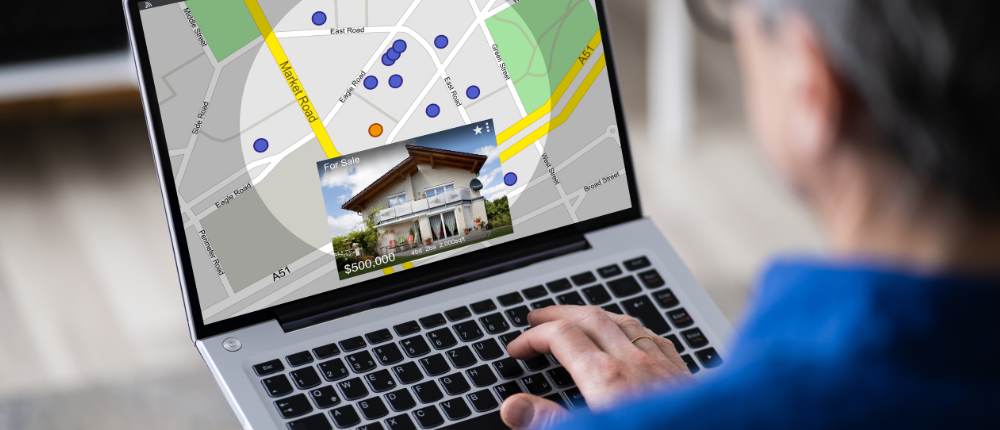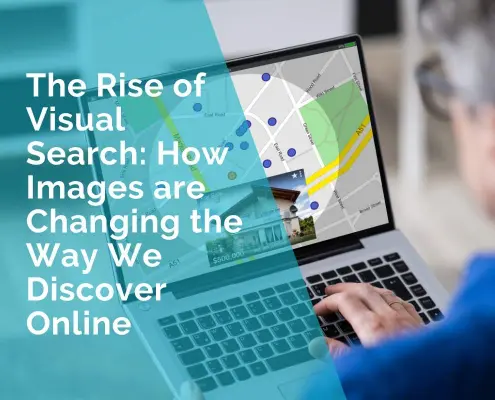The Rise of Visual Search: How Images are Changing the Way We Discover Online
Visual search is a cutting-edge technology that allows you to find information, products, or content online by using images rather than text. Instead of typing keywords into a search bar, you can simply upload a picture or take a photo with your device’s camera, and the visual search engine will analyze the image to provide relevant results. This technology leverages advanced algorithms and artificial intelligence to understand the visual characteristics of an image and match it with relevant online content.
Overview of the increasing importance of images in online search
In today’s digital age, images play a crucial role in how we consume information and interact with the online world. With the rise of smartphones and social media platforms like Instagram and Pinterest, we are constantly bombarded with visual content. As a result, consumers have grown accustomed to communicating and discovering new things through images rather than text alone.
Moreover, research has shown that visual content tends to be more engaging and memorable than text. For businesses, this means that using high-quality images in their online presence can significantly impact brand visibility and customer engagement. As a result, search engines and online platforms are increasingly prioritizing visual content in their algorithms and user interfaces.
Preview of how visual search is transforming online discovery
Visual search is revolutionizing the way we discover information, products, and content online. Instead of relying solely on text-based queries, you can now use images to initiate searches and find exactly what you’re looking for with greater speed and accuracy. This advancement is also influencing website design, as sites need to incorporate visual search capabilities to enhance user experience.
Whether you’re searching for a specific product, identifying landmarks in a travel photo, or exploring similar fashion styles, visual search technology opens up new possibilities for online exploration and discovery.
When I was in Hawaii a few years ago I bought a top that I loved wearing. The fabric was light so it was perfect for our Australian hot summer days and I really liked the design.
Needless to say I wore the top until it started falling apart. I looked in our stores and couldn’t find anything similar. I even looked online including Amazon doing a regular text search such as “white cotton top” “cotton top with black design” “loose fit cover up” “white cotton sarong” etc. And although I found some great alternatives, I couldn’t find MY top. I figured since it was a few years since I bought it, it would no longer be available.
Then one day I noticed a little icon in my Google search that said “Search by image”. I didn’t think it would work, but I thought I’d give it a go. I uploaded a photo of me wearing my favourite top and within seconds MY top popped up! It was available from an online store in the US! I jumped for joy and immediately ordered it. And a couple of weeks ago, it arrived on my doorstep.
The Evolution of Search: From Text to Images
Historical background of text-based search engines
In the early days of the internet, search engines relied primarily on text-based queries to retrieve information from the vast expanse of the web. Companies like Yahoo!, AltaVista, and later Google dominated the search landscape by indexing web pages and ranking them based on text content, keywords, and links.
Text-based search engines revolutionized how we access information online, making it easier to find relevant websites, articles, and resources on virtually any topic. Users could simply type a few keywords into a search bar, and within seconds, receive a list of links to relevant web pages.
However, text-based search engines had limitations. They were dependent on users’ ability to accurately formulate search queries using the right keywords, which often required some degree of trial and error. Additionally, they struggled to interpret ambiguous or complex search queries, leading to less precise results.
Emergence of image-based search technologies
As internet usage evolved and visual content became more prevalent, there arose a need for search engines to adapt and accommodate users’ growing preference for images. This led to the emergence of image-based search technologies, which enable users to search for information using pictures instead of text.
One of the pioneers in image-based search was Google Images, launched in 2001, which allowed users to search for images using text-based queries. Over time, advancements in computer vision and artificial intelligence paved the way for true image-based search capabilities, where users could upload or capture an image and receive relevant search results based on visual similarity.
Today, there are numerous image-based search engines and platforms that leverage sophisticated algorithms to analyze and interpret the visual content of images. These technologies can recognize objects, scenes, colors, patterns, and even text within images to deliver accurate and relevant search results.
Comparison of text-based and visual search methods
Text-based and visual search methods each have their own strengths and weaknesses, making them suitable for different types of queries and user preferences.
Text-based search:
Strengths:
- Well-established and widely used
- Effective for retrieving text-based information
- Can handle complex and specific queries
Weaknesses:
- Requires users to formulate search queries using keywords
- Limited ability to interpret ambiguous or visual-based queries
- Less intuitive for users who prefer visual content
Visual search:
Strengths:
- Intuitive and user-friendly, particularly for visual learners
- Enables search based on images rather than text
- Useful for identifying objects, products, and landmarks
Weaknesses:
- Relies on accurate image recognition and interpretation
- May struggle with low-quality or ambiguous images
- Less effective for text-heavy or abstract queries
Overall, the evolution from text-based to visual search represents a significant advancement in how we access and interact with online information. While text-based search engines remain essential for many types of queries, visual search technologies offer a more intuitive and immersive way to search, discover, and explore the digital world.
“Visual search offers businesses a game-changing advantage by enhancing customer engagement and driving sales. By simplifying the search process with images, businesses can improve user experience, increase conversion rates, and stay ahead in the competitive online market.“
Ivana Katz
The Mechanics of Visual Search
Explanation of how visual search algorithms work
Visual search algorithms operate by analyzing the visual features of an image and matching them with similar features in a database of images. This process involves several steps:
Image Recognition:
The algorithm first breaks down the uploaded or captured image into its fundamental visual elements, such as shapes, colors, textures, and patterns.
Feature Extraction:
Next, the algorithm extracts key features from the image, such as edges, corners, and other distinctive characteristics that help differentiate one object from another.
Feature Representation:
These extracted features are then converted into a mathematical representation, often in the form of vectors or descriptors, which can be compared with similar representations of other images.
Similarity Matching:
Finally, the algorithm compares the feature representation of the query image with those of images in the database to identify the most visually similar matches.
By employing sophisticated machine learning and computer vision techniques, visual search algorithms can accurately analyze and interpret the visual content of images, enabling users to search for similar or related images, products, or content.
Key components of visual search technology
Image Recognition:
The ability to accurately recognize objects, scenes, and patterns within images is crucial for visual search technology. This involves training algorithms on large datasets of labeled images to learn and identify various visual features.
Feature Extraction:
Extracting relevant visual features from images, such as shapes, colors, and textures, requires advanced signal processing and computer vision techniques. These features serve as the basis for comparison in visual search algorithms.
Indexing and Retrieval:
Visual search platforms rely on efficient indexing and retrieval mechanisms to quickly locate relevant images in a large database. This involves organizing images based on their visual features and implementing algorithms for fast and accurate retrieval.
Machine Learning Models:
Machine learning plays a central role in visual search technology, enabling algorithms to learn and improve over time based on user interactions and feedback. By continually refining their models, visual search platforms can enhance the accuracy and relevance of search results.
Examples of popular visual search platforms and tools
Google Lens:
Google Lens is a visual search tool that allows users to search for information, products, and landmarks using images captured with their smartphone cameras. It can recognize objects, text, and landmarks in real-time and provide relevant search results and information.
Pinterest Lens:
Pinterest Lens enables users to discover ideas and products by taking photos or uploading images of objects they’re interested in. It can recognize various items, including clothing, home decor, and recipes, and provide recommendations based on visual similarity.
Amazon Visual Search:
Amazon’s visual search feature allows users to search for products by uploading images or screenshots. It can identify similar products based on visual characteristics such as shape, colour, and pattern, making it easier for users to find items they’re looking for.
Snapchat Visual Search:
Snapchat’s visual search feature, known as “Scan,” enables users to search for products, songs, and other content by pointing their camera at physical objects or images. It can recognize products, barcodes, and QR codes and provide relevant information and links.
These examples illustrate how visual search technology is being integrated into various platforms and industries to enhance the user experience and facilitate online discovery. Whether you’re shopping for products, exploring new ideas, or seeking information, visual search offers a convenient and intuitive way to find what you’re looking for using images.
The Impact on E-Commerce
Enhancing product discovery through visual search
Visual search is revolutionizing the way consumers discover products online, offering a more intuitive and efficient alternative to traditional text-based search methods. By allowing users to search for products using images rather than keywords, visual search technology enhances product discovery in several ways.
Finding Similar Products:
Visual search enables users to find products similar to ones they’ve seen or are interested in. For example, if you see a stylish outfit on social media or in a magazine, you can simply take a photo or screenshot and use visual search to find similar clothing items from various retailers.
Exploring Related Items:
Visual search algorithms can analyze the visual characteristics of products to suggest related items or accessories. For instance, if you search for a particular piece of furniture, visual search might recommend complementary decor items or similar styles from the same retailer.
Discovering New Trends:
Visual search can also help users discover new trends and styles by analyzing images from fashion shows, social media influencers, and other sources. By identifying common visual patterns and themes, visual search algorithms can suggest relevant products that align with current trends and preferences.
Overall, visual search enhances product discovery in e-commerce by leveraging the power of images to provide more relevant and personalized search results. Whether you’re browsing for fashion items, home decor, or electronics, visual search makes it easier to find exactly what you’re looking for.
Improving user experience and engagement on e-commerce websites
Visual search technology not only enhances product discovery but also improves the overall user experience and engagement on e-commerce websites. By integrating visual search features into their platforms, retailers can offer a more immersive and interactive shopping experience for their customers.
Streamlining the Search Process:
Visual search simplifies the search process by eliminating the need for users to type in specific keywords or product names. Instead, users can simply upload an image or take a photo to initiate a search, making the shopping experience more convenient and efficient.
Increasing Time Spent on Site:
Visual search encourages users to explore a wider range of products and content on e-commerce websites, leading to increased engagement and longer time spent on site. Users can easily discover new items and browse related products without having to navigate away from the page.
Enhancing Personalization:
Visual search enables retailers to personalize the shopping experience based on users’ visual preferences and browsing behavior. By analyzing the visual characteristics of images users interact with, retailers can recommend relevant products and tailor recommendations to individual tastes and preferences.
Case studies of successful implementations of visual search in e-commerce
ASOS:
The online fashion retailer ASOS implemented visual search technology to enhance the shopping experience for its customers. By allowing users to upload photos of outfits they like, ASOS’ visual search feature suggests similar clothing items available for purchase on its website, leading to increased engagement and conversions.
Wayfair:
Home furnishing retailer Wayfair integrated visual search technology into its mobile app to help users find furniture and decor items. By leveraging computer vision algorithms, Wayfair’s visual search feature enables users to search for products by taking photos of items they like or by uploading images from other sources, resulting in a more personalized shopping experience.
eBay:
eBay introduced a visual search feature called “Find It On eBay,” which allows users to search for products by taking photos or screenshots. By analyzing the visual characteristics of images, eBay’s visual search feature helps users find similar items available for sale on its platform, increasing user engagement and driving sales.
These case studies demonstrate how visual search technology is being successfully implemented in e-commerce to enhance product discovery, improve user experience, and drive engagement and sales. By leveraging the power of images, retailers can offer a more personalized and immersive shopping experience for their customers, ultimately leading to increased satisfaction and loyalty.
Visual Search in Social Media and Content Discovery
Integration of visual search features in social media platforms
Social media platforms have recognized the power of visual search technology in enhancing user engagement and facilitating content discovery. Many platforms have integrated visual search features to enable users to explore and discover content using images.
Pinterest:
Pinterest is a prime example of a social media platform that has fully embraced visual search technology. Its visual search tool, known as Pinterest Lens, allows users to take photos or upload images to discover related content, including ideas for recipes, home decor, fashion, and more. By analyzing the visual characteristics of images, Pinterest can recommend relevant pins and boards that match users’ interests and preferences.
Instagram:
Instagram, another popular social media platform, has also introduced visual search features to enhance the user experience. Its “Shop” tab allows users to discover products and purchase them directly within the app. Additionally, Instagram’s Explore page uses visual search algorithms to recommend content based on users’ interests and interactions, making it easier to discover new accounts, posts, and trends.
Snapchat:
Snapchat’s visual search feature, known as “Scan,” enables users to search for products, songs, and other content by pointing their camera at physical objects or images. For example, users can scan a friend’s outfit to find similar clothing items or scan a product barcode to access reviews and purchase options. This integration of visual search technology enhances the user experience and drives engagement on the platform.
Facilitating content discovery through image-based search
Visual search technology facilitates content discovery on social media platforms by enabling users to explore and discover new content based on images they find engaging or interesting. This functionality extends beyond traditional text-based search methods and allows users to discover content in a more intuitive and immersive way.
Discovering Similar Content:
Visual search enables users to discover similar content based on the visual characteristics of images they interact with. For example, if you come across a captivating photo of a scenic landscape on social media, you can use visual search to find similar images or related content, such as travel guides, photography tips, or outdoor gear recommendations.
Exploring Related Topics:
Visual search algorithms can analyze the visual elements of images to suggest related topics and interests. For instance, if you’re interested in a particular fashion style or home decor theme, visual search can recommend related content and accounts that align with your preferences, allowing you to explore new ideas and trends.
Engaging with Interactive Content:
Visual search technology enables users to engage with interactive content, such as augmented reality (AR) filters and virtual try-on experiences. For example, social media platforms like Snapchat and Instagram offer AR filters that allow users to try on virtual makeup looks or accessories using their device’s camera, enhancing the user experience and driving engagement.
The role of visual search in driving engagement on social platforms
Visual search plays a crucial role in driving engagement on social media platforms by offering users a more interactive and personalized experience. By integrating visual search features, social platforms can enhance user engagement and encourage users to spend more time exploring and discovering content.
Increasing User Interaction:
Visual search features encourage users to interact with content in new and innovative ways, such as scanning products, trying on virtual accessories, or exploring related topics and interests. This increased interactivity leads to higher engagement and longer time spent on the platform.
Enhancing Personalization:
Visual search algorithms analyze users’ interactions and preferences to deliver personalized recommendations and content suggestions. By understanding users’ visual interests and behaviors, social platforms can tailor the user experience to individual preferences, increasing user satisfaction and retention.
Driving Commerce and Monetization:
Visual search technology enables social platforms to monetize user engagement by integrating e-commerce features and advertising opportunities. For example, platforms like Pinterest and Instagram allow brands to promote products and services through visual content and targeted recommendations, driving sales and revenue generation.
Overall, visual search technology enhances content discovery, drives user engagement, and offers new opportunities for commerce and monetization on social media platforms. By leveraging the power of images, social platforms can create a more immersive and personalized experience for their users, ultimately leading to increased user satisfaction and platform growth.
The rise of visual search represents a transformative shift in the way we discover and interact with content online. By harnessing the power of images, visual search technology offers a more intuitive, immersive, and personalized search experience across various industries.
From e-commerce to social media and beyond, visual search enables users to explore, discover, and engage with content in ways that were previously unimaginable.
Despite facing challenges related to accuracy, relevance, and ethical considerations, visual search continues to evolve and innovate, paving the way for a future where images play a central role in shaping our online experiences.
As visual search technology advances and becomes more seamlessly integrated into our digital lives, it holds the potential to revolutionize the way we navigate and understand the vast landscape of information available on the internet.
Frequently Asked Questions
What is visual search, and how does it differ from traditional text-based search?
Visual search is a technology that allows users to search for information, products, or content online using images instead of text. While traditional text-based search engines require users to type in keywords to find relevant results, visual search enables users to upload or capture images and receive visually similar or related content.
How do visual search algorithms work?
Visual search algorithms work by analyzing the visual characteristics of an image, such as shapes, colors, textures, and patterns, and matching them with similar features in a database of images. These algorithms leverage machine learning and computer vision techniques to understand and interpret the content of images, enabling accurate and relevant search results.
What are the key benefits of visual search for users?
Visual search offers several benefits for users, including a more intuitive and immersive search experience, enhanced product discovery, and personalized recommendations based on visual preferences. Additionally, visual search enables users to explore and discover content in a more efficient and engaging way compared to traditional text-based search methods.
How is visual search transforming e-commerce?
Visual search is revolutionizing e-commerce by enhancing product discovery, improving user experience, and driving engagement and sales. By enabling users to search for products using images, visual search technology streamlines the shopping process, facilitates cross-platform integration, and offers personalized recommendations based on visual preferences.
Which industries are leveraging visual search technology?
Visual search technology is being adopted across various industries, including e-commerce, social media, travel, automotive, and healthcare. In addition to enhancing product discovery and content exploration, visual search is being used for applications such as image recognition, object detection, and augmented reality.
What are some popular visual search platforms and tools?
Some popular visual search platforms and tools include Google Lens, Pinterest Lens, Amazon Visual Search, eBay’s Find It On eBay, and Snapchat’s Scan feature. These platforms enable users to search for products, identify objects, and discover content using images captured with their devices’ cameras.
What are the challenges associated with visual search technology?
Challenges associated with visual search technology include issues related to accuracy and relevance in search results, ethical considerations surrounding privacy and data security, and potential biases in algorithms. Addressing these challenges requires ongoing research, innovation, and responsible deployment of visual search technology.
How can businesses implement visual search technology?
Businesses can implement visual search technology by integrating visual search features into their websites, mobile apps, and other digital platforms. This may involve partnering with visual search providers, developing custom solutions, or leveraging APIs and SDKs to incorporate visual search functionality into existing systems.
How can visual search technology benefit content creators and marketers?
Visual search technology can benefit content creators and marketers by increasing visibility, driving traffic, and improving engagement with visual content. By optimizing images for visual search, content creators can reach a broader audience and attract users who prefer visual exploration and discovery.
How does visual search impact user behavior and engagement on social media platforms?
Visual search enhances user behavior and engagement on social media platforms by offering a more interactive and personalized experience. Users can explore and discover content using images, interact with augmented reality (AR) filters and virtual try-on experiences, and engage with content that aligns with their visual preferences and interests.
What role does visual search play in enhancing user experience on e-commerce websites?
Visual search improves the user experience on e-commerce websites by streamlining the search process, increasing time spent on site, and enhancing personalization. Users can easily discover products, explore related items, and receive tailored recommendations based on their visual preferences, leading to a more engaging and satisfying shopping experience.
How can visual search technology help users discover new trends and styles?
Visual search technology helps users discover new trends and styles by analyzing images from fashion shows, social media influencers, and other sources. By identifying common visual patterns and themes, visual search algorithms can suggest relevant products and content that align with current trends and preferences, enabling users to stay informed and inspired.
What are some practical applications of visual search technology beyond e-commerce?
Beyond e-commerce, visual search technology has practical applications in industries such as travel, automotive, healthcare, and education. For example, visual search can help users identify landmarks, attractions, and destinations while traveling, or assist healthcare professionals in diagnosing medical conditions based on visual symptoms.
 Ivana Katz from Websites 4 Small Business is an award winning web designer who builds websites that build your business. She provides unbeatable web design services to fit your budget.
Ivana Katz from Websites 4 Small Business is an award winning web designer who builds websites that build your business. She provides unbeatable web design services to fit your budget.
The end result? Professional, custom-made sites that give your business the extra oomph it needs to stand out from the competition and make an impact.
Whether you’re a brand-new business or an established one ready to improve your digital presence, Ivana makes it easy to get your business online very quickly. Her websites are professional, tailored to fit your budget, and give your business a serious boost.
Download your FREE copy of “Ultimate Website Design Secrets Blackbook – 10 Bulletproof Strategies for Designing an Outrageously Successful Website”












